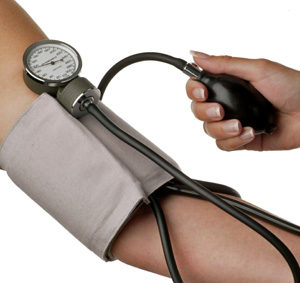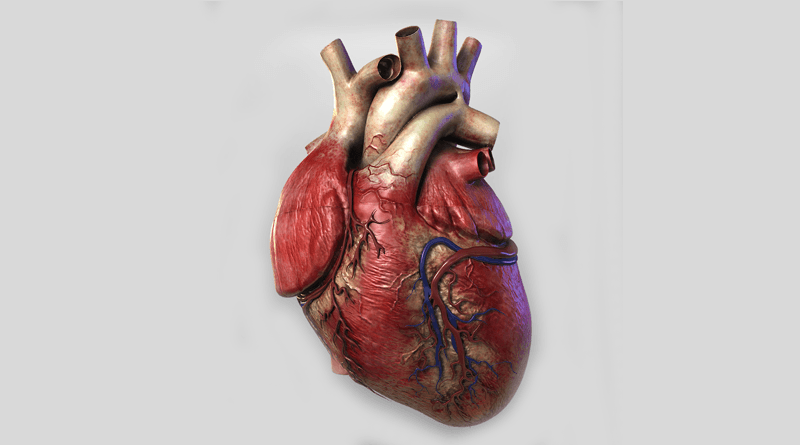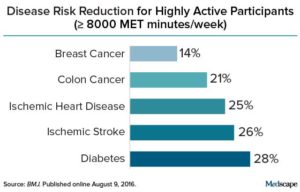![]() It is important to eat a varied diet for health, one that focuses on the food groups (and no - cookies and cake are not necessary foods). The first study looks at liver cancer risk and selenium - which is found in fish, shellfish, meat, milk, eggs, and certain South American nuts, such as Brazil nuts. The second article focuses on colorectal cancer and retinoic acid, a compound derived in the body from vitamin A. Vitamin A rich foods can provide you with retinoic acid, such as the lungs, kidneys, and liver of beef, lamb, pork. Also poultry giblets, eggs, cod liver oil, shrimp, fish, fortified milk, butter, cheddar cheese and Swiss cheese. Red and orange vegetables and fruits such as sweet potatoes, squash, carrots, pumpkins, cantaloupes, apricots, peaches and mangoes all contain significant amounts of beta-carotene, thus retinoids. Note that research generally has found health benefits from real foods, not from supplements.
It is important to eat a varied diet for health, one that focuses on the food groups (and no - cookies and cake are not necessary foods). The first study looks at liver cancer risk and selenium - which is found in fish, shellfish, meat, milk, eggs, and certain South American nuts, such as Brazil nuts. The second article focuses on colorectal cancer and retinoic acid, a compound derived in the body from vitamin A. Vitamin A rich foods can provide you with retinoic acid, such as the lungs, kidneys, and liver of beef, lamb, pork. Also poultry giblets, eggs, cod liver oil, shrimp, fish, fortified milk, butter, cheddar cheese and Swiss cheese. Red and orange vegetables and fruits such as sweet potatoes, squash, carrots, pumpkins, cantaloupes, apricots, peaches and mangoes all contain significant amounts of beta-carotene, thus retinoids. Note that research generally has found health benefits from real foods, not from supplements.
From Science Daily: Selenium status influence cancer risk
As a nutritional trace element, selenium forms an essential part of our diet. Researchers have been able to show that high blood selenium levels are associated with a decreased risk of developing liver cancer. Selenium (Se) is found in foods like fish, shellfish, meat, milk and eggs; certain South American nuts, such as Brazil nuts, are also good sources of selenium. It is a trace element that occurs naturally in soil and plants, and enters the bodies of humans and animals via the food they ingest. European soil has a rather low selenium concentration, in comparison with other areas of the world, especially in comparison to North America. Deficiencies of varying degrees of severity are common among the general population, and are the reason why German livestock receive selenium supplements in their feed.
While in Europe, neither a selenium-rich diet nor adequate selenium supplementation is associated with adverse effects, selenium deficiency is identified as a risk factor for a range of diseases. "We have been able to show that selenium deficiency is a major risk factor for liver cancer," says Prof. Dr. Lutz Schomburg of the Institute of Experimental Endocrinology, adding: "According to our data, the third of the population with lowest selenium status have a five- to ten-fold increased risk of developing hepatocellular carcinoma -- also known as liver cancer."....Previous studies had suggested a similar relationship between a person's selenium status and their risk of developing colon cancer, as well as their risk of developing autoimmune thyroid disease. (Original study)
From Science Daily: Retinoic acid suppresses colorectal cancer development, study finds
Retinoic acid, a compound derived in the body from vitamin A, plays a critical role in suppressing colorectal cancer in mice and humans, according to researchers at the Stanford University School of Medicine. Mice with the cancer have lower-than-normal levels of the metabolite in their gut, the researchers found. Furthermore, colorectal cancer patients whose intestinal tissues express high levels of a protein that degrades retinoic acid tend to fare more poorly than their peers.
"The intestine is constantly bombarded by foreign organisms," said Edgar Engleman, MD, professor of pathology and of medicine. "As a result, its immune system is very complex. There's a clear link in humans between inflammatory bowel disease, including ulcerative colitis, and the eventual development of colorectal cancer. Retinoic acid has been known for years to be involved in suppressing inflammation in the intestine. We wanted to connect the dots and learn whether and how retinoic acid levels directly affect cancer development."
"We found that bacteria, or molecules produced by bacteria, can cause a massive inflammatory reaction in the gut that directly affects retinoic acid metabolism," said Engleman. "Normally retinoic acid levels are regulated extremely tightly. This discovery could have important implications for the treatment of human colorectal cancer."
Further investigation showed that retinoic acid blocks or slows cancer development by activating a type of immune cell called a CD8 T cell. These T cells then kill off the cancer cells. In mice, lower levels of retinoic acid led to reduced numbers and activation of CD8 T cells in the intestinal tissue and increased the animals' tumor burden, the researchers found. "It's become very clear through many studies that chronic, smoldering inflammation is a very important risk factor for many types of cancer," said Engleman.

 What happens to your brain when you stop exercising? The results of this
What happens to your brain when you stop exercising? The results of this  Studies are accumulating evidence that the hormone disrupting effects of compounds BPA (bisphenol A) and BPS (the common substitute for BPA) have numerous negative health effects in humans, including reproductive disorders. But now a second BPA substitute - BPSIP - is also being found in humans, and may be even more persistent than BPA and BPS. This is because they're all chemically similar, and all three are endocrine disruptors. This article points out that they have slightly different effects, and when we are exposed to more than one of them (which we are), then the health effects will be even more worrisome.
Studies are accumulating evidence that the hormone disrupting effects of compounds BPA (bisphenol A) and BPS (the common substitute for BPA) have numerous negative health effects in humans, including reproductive disorders. But now a second BPA substitute - BPSIP - is also being found in humans, and may be even more persistent than BPA and BPS. This is because they're all chemically similar, and all three are endocrine disruptors. This article points out that they have slightly different effects, and when we are exposed to more than one of them (which we are), then the health effects will be even more worrisome. Can eating a vegetarian diet lower blood pressure? Both this review and other reviews of studies say YES, that those following vegetarian diets have a lower prevalence of hypertension. Overall, the mean prevalence of hypertension was 21% in those consuming a vegetarian diet and 29% in those consuming a nonvegetarian diet (the differences varied between studies).Those following a vegetarian diet also tended to have a healthier lifestyle. As the researchers point out: blood pressure medicine lowers blood pressure for one day, while lifestyle changes (diet, exercise, not smoking, limiting or avoiding alcohol) can lower blood pressure for life.
Can eating a vegetarian diet lower blood pressure? Both this review and other reviews of studies say YES, that those following vegetarian diets have a lower prevalence of hypertension. Overall, the mean prevalence of hypertension was 21% in those consuming a vegetarian diet and 29% in those consuming a nonvegetarian diet (the differences varied between studies).Those following a vegetarian diet also tended to have a healthier lifestyle. As the researchers point out: blood pressure medicine lowers blood pressure for one day, while lifestyle changes (diet, exercise, not smoking, limiting or avoiding alcohol) can lower blood pressure for life. Yikes! A good reason to lose weight now rather than years from now, and the importance of not ignoring a weight gain (you know, over the years as the pounds slowly creep up). The researchers found that for every 10 years of being overweight as an adult, there was an associated 7% increase in the risk for all obesity-related cancers. The degree of overweight (dose-response) during adulthood was important in the risk of developing cancer, especially for
Yikes! A good reason to lose weight now rather than years from now, and the importance of not ignoring a weight gain (you know, over the years as the pounds slowly creep up). The researchers found that for every 10 years of being overweight as an adult, there was an associated 7% increase in the risk for all obesity-related cancers. The degree of overweight (dose-response) during adulthood was important in the risk of developing cancer, especially for  The
The  Get active, really active, to reduce your risk for 5 diseases: breast cancer, colon cancer, heart disease, and ischemic stroke. Instead of the 150 minutes of brisk walking or 75 minutes per week of running (which is equal to the 600 metabolic equivalent (MET) minutes now recommended by the World Health Organization), this study found that much more exercise is needed for
Get active, really active, to reduce your risk for 5 diseases: breast cancer, colon cancer, heart disease, and ischemic stroke. Instead of the 150 minutes of brisk walking or 75 minutes per week of running (which is equal to the 600 metabolic equivalent (MET) minutes now recommended by the World Health Organization), this study found that much more exercise is needed for  Credit: Medscape
Credit: Medscape Studies have found that increased nut consumption has been associated with
Studies have found that increased nut consumption has been associated with